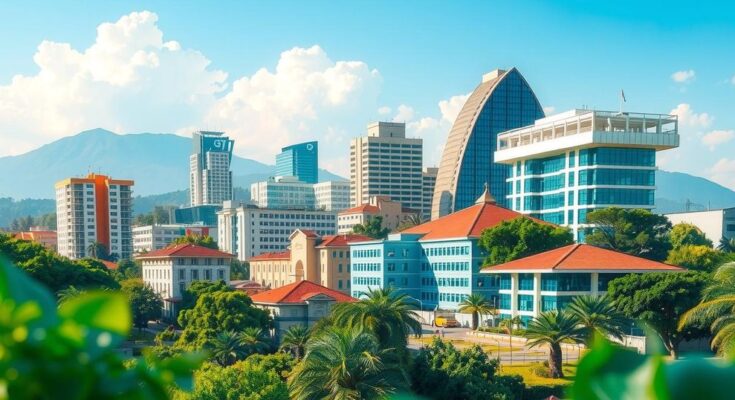Standard Bank projects Ghana’s GDP growth to reach 5.4% in 2025, with a significant contribution from the mining sector, particularly gold. Challenges persist in non-mineral sectors like manufacturing and agriculture. Despite potential currency depreciation, there is optimism about Ghana’s economic stability with necessary fiscal adjustments.
Standard Bank forecasts that Ghana’s economy will continue its growth trajectory, with the Gross Domestic Product (GDP) expected to increase by 5.4% year-on-year in 2025. This projection was presented by Jibran Qureishi, the Head of Africa Research at Standard Bank Group, during the Stanbic Economic Series webinar titled “The Economy Under a New Era.”
Mr. Qureishi noted that Ghana’s GDP growth has displayed remarkable resilience, showing a rise to 5.8% year-on-year in 2024, an improvement from 2.9% in 2023. He attributed this growth to various factors, primarily the mining sector, particularly gold, which is anticipated to propel further economic expansion in the coming years.
The significant impact of the mining sector on Ghana’s recovery effort was emphasized by Mr. Qureishi. He mentioned a resurgence in mining activities nationwide, especially gold mining, and highlighted initiatives such as the revival of the Obuasi mine and plans for a large lithium facility expected to commence in 2026/2027, which are anticipated to enhance growth.
Conversely, Mr. Qureishi pointed out ongoing challenges in other economic sectors. He remarked that while mining flourishes, areas like manufacturing and real estate are encountering difficulties, along with agricultural productivity which suffered due to last year’s dry conditions in Northern Ghana.
Despite these challenges, Mr. Qureishi expressed optimism regarding Ghana’s economic future, indicating that the revival of key mining projects and the potential for greater growth in 2026 affirm the economy’s resilience. He cautioned, however, that to sustain this growth, it is imperative to resolve issues related to energy sector arrears and fiscal imbalances.
Regarding currency predictions, Mr. Qureishi anticipated a depreciation of the Ghanaian cedi against the US dollar, projecting a rate of GH¢16.4 to $1. He identified structural challenges related to foreign exchange flows, noting that major revenues from mining and cocoa are funneled to the Bank of Ghana rather than the open interbank market, indicating a need for cautious economic governance to manage these flows effectively.
In conclusion, while Ghana faces certain economic challenges, the projections for sustained growth illustrate a resilient economy influenced significantly by the mining sector and strategic initiatives. Addressing structural issues and maintaining macroeconomic stability will be crucial for the nation’s continued growth.
In summary, Standard Bank’s projection for Ghana’s economy indicates a positive outlook with a GDP increase to 5.4% in 2025, driven primarily by the mining sector’s recovery. While challenges remain in other sectors, the overall economic resilience is notable. Addressing fiscal challenges and ensuring prudent economic management will be vital for sustaining this growth trajectory moving forward.
Original Source: www.ghanabusinessnews.com




